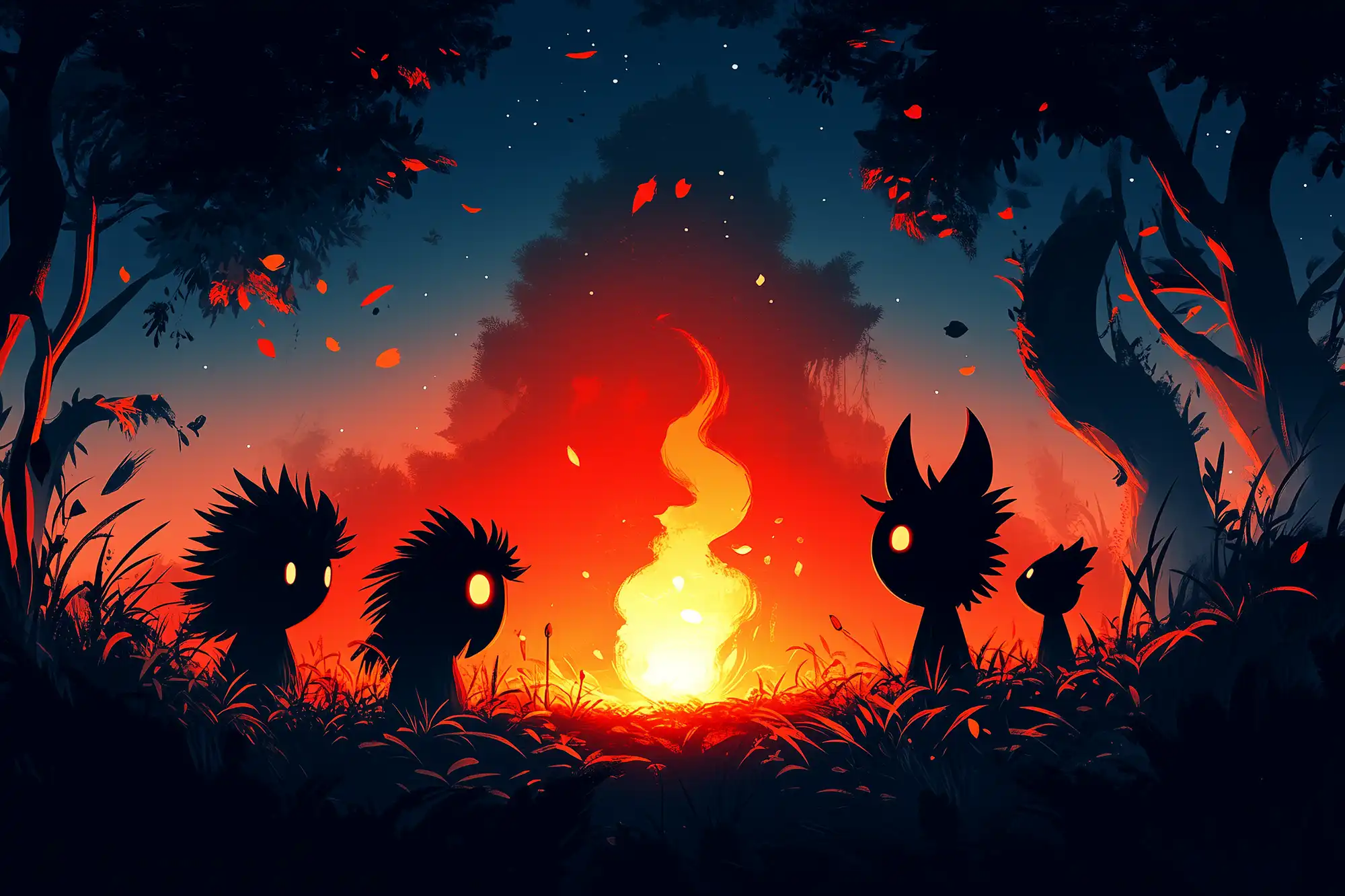Forget the algorithms, the data, and the endless noise of digital content. Let’s get real: what truly captures attention, makes people lean in, and motivates them to act? It’s the story.
It’s the human connection, the thrill of the narrative, and the emotional rollercoaster that keeps people coming back for more.
People don’t remember statistics; they remember the characters, the struggles, and the triumphs. It’s the story that lingers when everything else fades away. For content creators, marketers, and tech enthusiasts, the challenge isn’t just to create content—it’s to create stories that demand attention and make an impact.
This article will show you how to master the timeless craft of storytelling, how it can foster unshakable brand loyalty, and why, even in an age where AI is changing the rules, storytelling remains the heart of real human connection.
The Essence of Storytelling
Storytelling is a craft as old as humanity itself. From ancient campfires where tales were shared among tribes to the digital stories we now scroll through on our devices, the fundamental elements of a good story have stayed the same: characters, conflict, and resolution. These three pillars allow us to connect, empathize, and experience emotions through the eyes of others.

Characters give life to stories.
They help us see ourselves in the narrative, be it a hero overcoming adversity or a brand striving to make a positive difference. It’s the characters that pull us into the story and make it relatable.
Conflict drives engagement.
It’s the tension, the challenge that needs to be overcome, that keeps us curious. Whether it’s an underdog taking on a formidable challenge or a brand working to solve a pressing problem, conflict is what keeps the audience hooked.
Resolution provides meaning.
It’s the part where the audience gets to breathe a sigh of relief, feel inspired, or gain a new perspective. In a world driven by instant gratification, offering a meaningful resolution is what makes a story resonate long after it has been told.
On a psychological level, stories are wired into the human brain.
We crave them because they trigger emotions and help us make sense of the world. Neuroscience even shows that when we hear a story, our brains release oxytocin, a hormone associated with empathy and bonding. This emotional connection is what makes storytelling so powerful for content creators and marketers.
Despite evolving from oral traditions to digital screens, the essence of storytelling hasn’t changed. Stories still bind us together, transcend cultures, and create a sense of community. For content creators, understanding these timeless elements is key to building narratives that not only inform but also inspire action.
Storytelling in Marketing
The brands that truly connect with their audiences on an emotional level are the ones that tell compelling stories.

Take Nike’s iconic “Just Do It”, for example. It’s more than just a slogan—it’s a story. It’s the tale of grit, perseverance, and triumph over adversity. By focusing on human stories of athletes overcoming obstacles, Nike has humanized its brand. When people see that simple checkmark, they don’t just think of sneakers; they think of personal empowerment, resilience, and the triumph of the human spirit. That’s the power of storytelling—it transcends the product and reaches a place of emotional resonance.
When crafting a brand story, it’s crucial to focus on the emotional journey. Who is the hero? (Hint: It’s often your customer.) What challenges do they face? How does your brand help them overcome these challenges to reach a satisfying resolution? Answering these questions helps to weave a story that puts your audience at the center, making them feel seen and understood.
Practical storytelling in marketing doesn’t have to be complex:
- Start with empathy: Understand the challenges your audience faces.
- Craft a relatable hero: Position your customer as the hero, with their struggles front and center.
- Showcase the transformation: Highlight how your product or service helps the hero overcome these challenges.
By weaving these elements into your content—whether it’s a campaign, a blog post, or a social media update—you give your brand a human face and make it easier for your audience to emotionally engage.
Storytelling in marketing is about creating those emotional bridges—the ones that transform a faceless company into a trusted partner in someone’s journey.
Lessons from the Greats
Storytelling is not just a marketing tactic—it’s a cornerstone of building a lasting brand. The most iconic brands in the world didn’t become household names just because of a good product; they became memorable because they told great stories that resonated with people’s emotions, values, and aspirations.
Let’s look at Apple. From its very beginning, Apple positioned itself as the brand for the creatives, the rebels, the dreamers. Their famous “Think Different” campaign didn’t focus on the technical specs of their products. Instead, it celebrated the ones who “see the world differently”—it told the story of human potential. Apple’s narrative wasn’t about computers or gadgets; it was about people, innovation, and a creative spirit. This story, which was reinforced time and time again, helped Apple build one of the most loyal followings in history.
Similarly, Coca-Cola has always focused on storytelling that evokes happiness and togetherness. Their Christmas commercials, featuring joyful gatherings and iconic Santa images, don’t just sell soda—they sell an experience, an emotion. By doing so, Coca-Cola has cemented itself as a brand intrinsically linked to celebration and joy.

Then there’s Disney, a master storyteller. Disney’s brand story is one of imagination and magic, built on creating enchanting experiences. From the movies they create to the theme parks they build, every aspect of Disney tells the same story: that magic is real, and it’s something we can all be a part of. This narrative is so powerful that it has forged a deep emotional connection with audiences across generations.
These brands have something in common—they don’t just tell stories about products, they tell stories that evoke emotions, connect with values, and create an identity that people want to be part of.
Here’s how you can do it:
- Define Your Story: Every brand has a story—how it came to be, why it exists, and what it stands for. Make sure your audience knows this story.
- Be Consistent: Brand storytelling isn’t just a campaign; it’s woven into every aspect of what you do—from your advertising to your customer service. Consistency builds trust and reinforces your narrative.
- Show Real People: Whether it’s a customer testimonial or a behind-the-scenes story from your team, showing the people behind your brand makes it more relatable and human.
When storytelling is embedded in the core of brand building, it does more than attract attention—it inspires loyalty and creates lifelong fans. It shapes how people perceive your brand, and more importantly, how they feel about it.
Storytelling in the Age of AI
For content creators and marketers, AI presents both exciting opportunities and unique challenges when it comes to storytelling.
AI is increasingly being used to assist in the creation of stories—from generating content to predicting which narratives will resonate most with audiences. Tools like Temaki can generate blog posts, draft social media content, and write scripts. This is a tremendous opportunity to enhance productivity and tackle writer’s block. Imagine being able to brainstorm creative ideas with an AI collaborator who never runs out of suggestions!
Yet, there is a fine line to walk. The challenge lies in ensuring that stories retain their human touch. No matter how sophisticated, AI doesn’t feel emotions—it analyzes patterns. It can be an assistant, but the essence of a great story lies in its ability to capture the subtleties of human experience, emotions, and values. Authenticity and emotional nuance are areas where human storytellers still hold the advantage.
Opportunities
- Data-Driven Insights
AI can analyze large sets of data to help storytellers understand what resonates with audiences. This means you can tailor your narratives to better connect with your audience. - Enhancing Creativity
AI can help writers overcome creative blocks by generating starting points for stories or suggesting different ways to approach a narrative. - Scaling Storytelling
AI can help scale content production, making it possible for brands to tell their story consistently across platforms and reach a broader audience.
To leverage AI while retaining authenticity, it’s important for content creators to treat AI as a co-creator rather than a replacement. Let AI handle the repetitive, mundane tasks—like drafting outlines or generating initial ideas—so that you can focus on adding the emotional and creative depth that only a human can bring.
Challenges
- Maintaining Authenticity
AI can mimic tone and style, but it doesn’t understand context like a human does. There’s a risk of stories becoming formulaic or lacking depth if left entirely to AI. - Ethical Considerations
Who owns a story generated by AI? How do we ensure AI-created content doesn’t spread misinformation or perpetuate biases? These ethical questions are increasingly important as we embrace AI in content creation.
The future of storytelling is about finding the right balance—leveraging AI for efficiency while retaining the human connection that makes stories meaningful. When human creativity and AI efficiency work in tandem, the possibilities for storytelling are endless.
Conclusion
In a world increasingly driven by data, algorithms, and automation, the timeless power of storytelling remains irreplaceable. Stories are what make us human. They connect us across cultures, evoke emotions, and inspire action. They are more than just a way to convey information—they are a bridge to understanding, an emotional handshake that builds trust and community.

As you move forward in this new age of content creation, embrace storytelling as both an art and a strategy. Use it to connect authentically, inspire action, and build relationships that go beyond mere transactions. Remember, while technology might evolve, the human need for stories will always be timeless.
Your story is waiting to be told—what will you say next?



